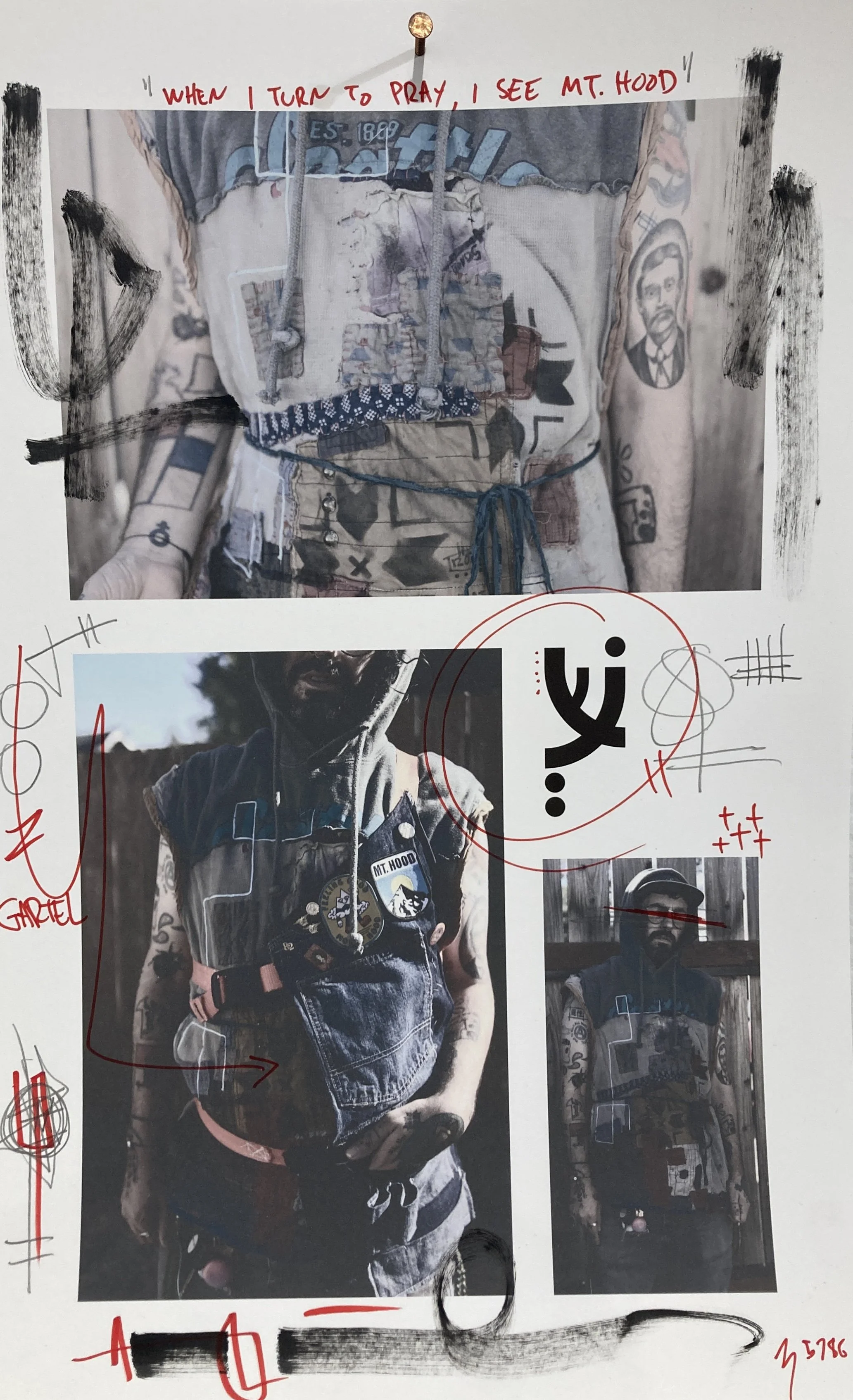


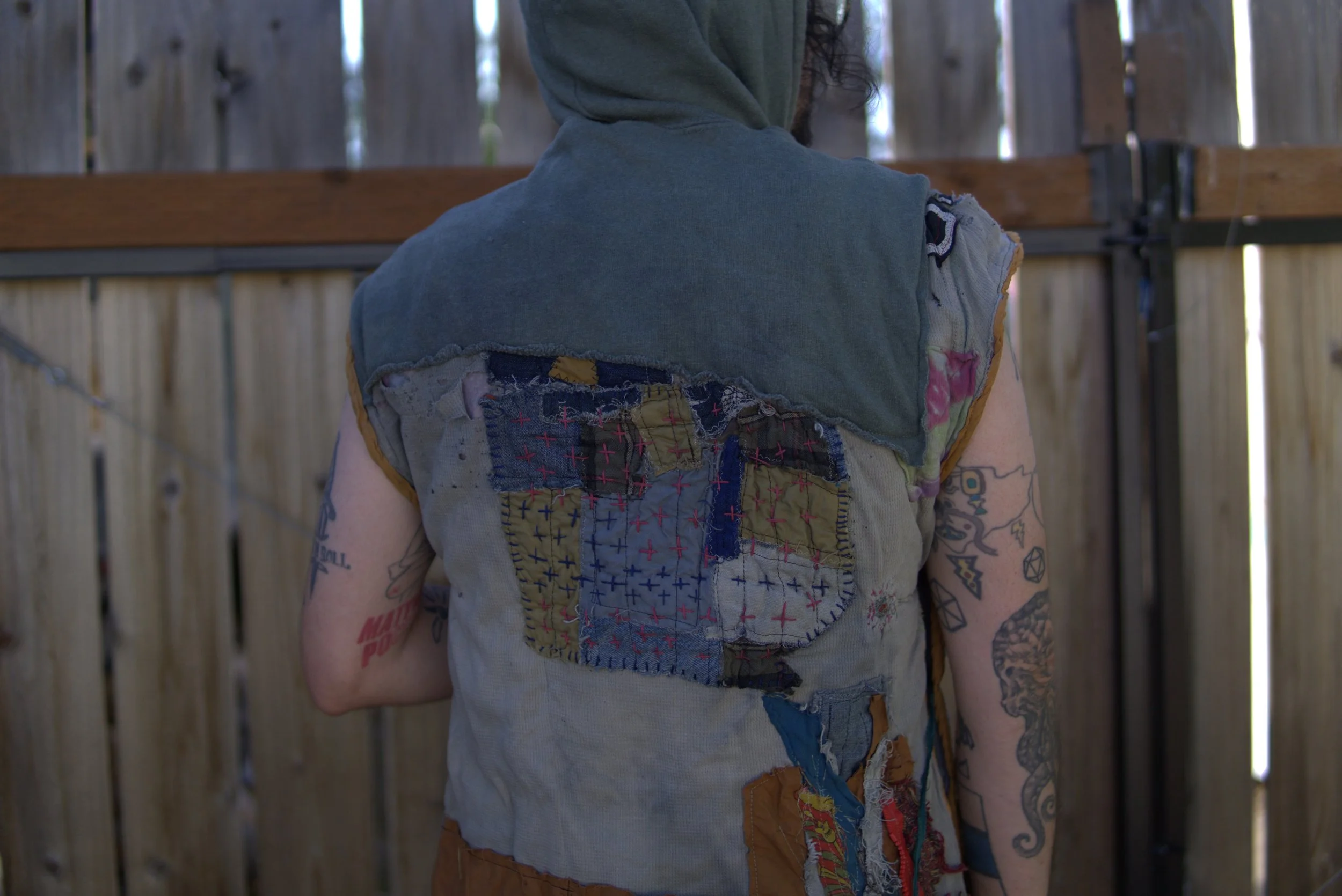
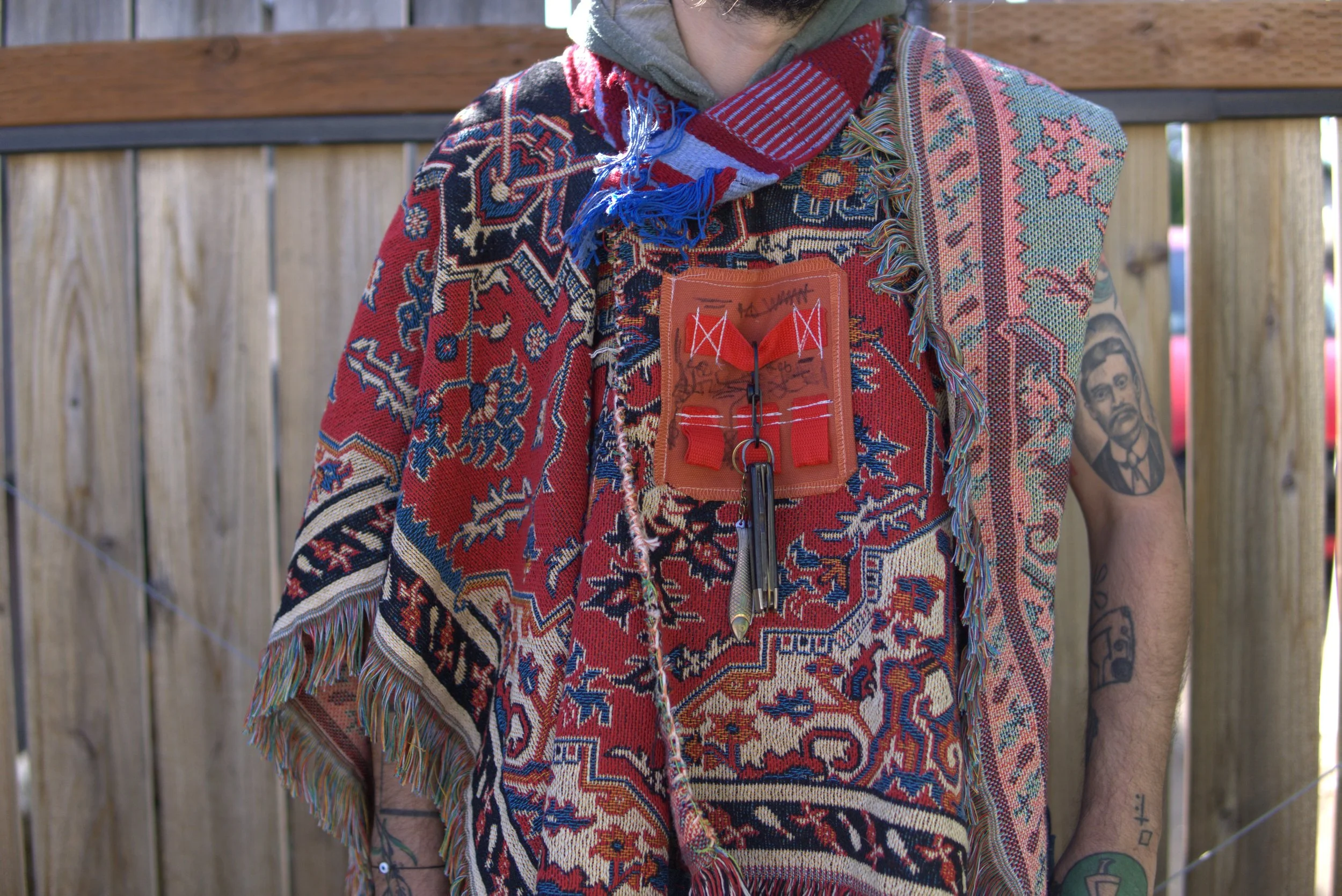
Photos by Marissa Bohlman
KASKADOVer Project. 2025
“What happens when ancient wisdom meets contemporary reality?
The Kaskadover Project explores the conscious creation of new Jewish cultural expressions rooted in the Pacific Northwest bio-region. "Kaskadover" combines "Cascade" (our mountain range) with the naming convention of traditional Hasidic courts, creating an intellectual framework for authentic cultural innovation within our bio-regional diaspora.”
Shown in the SOCIAL FABRIC exhibition at Gallery 114 in October of 2025.
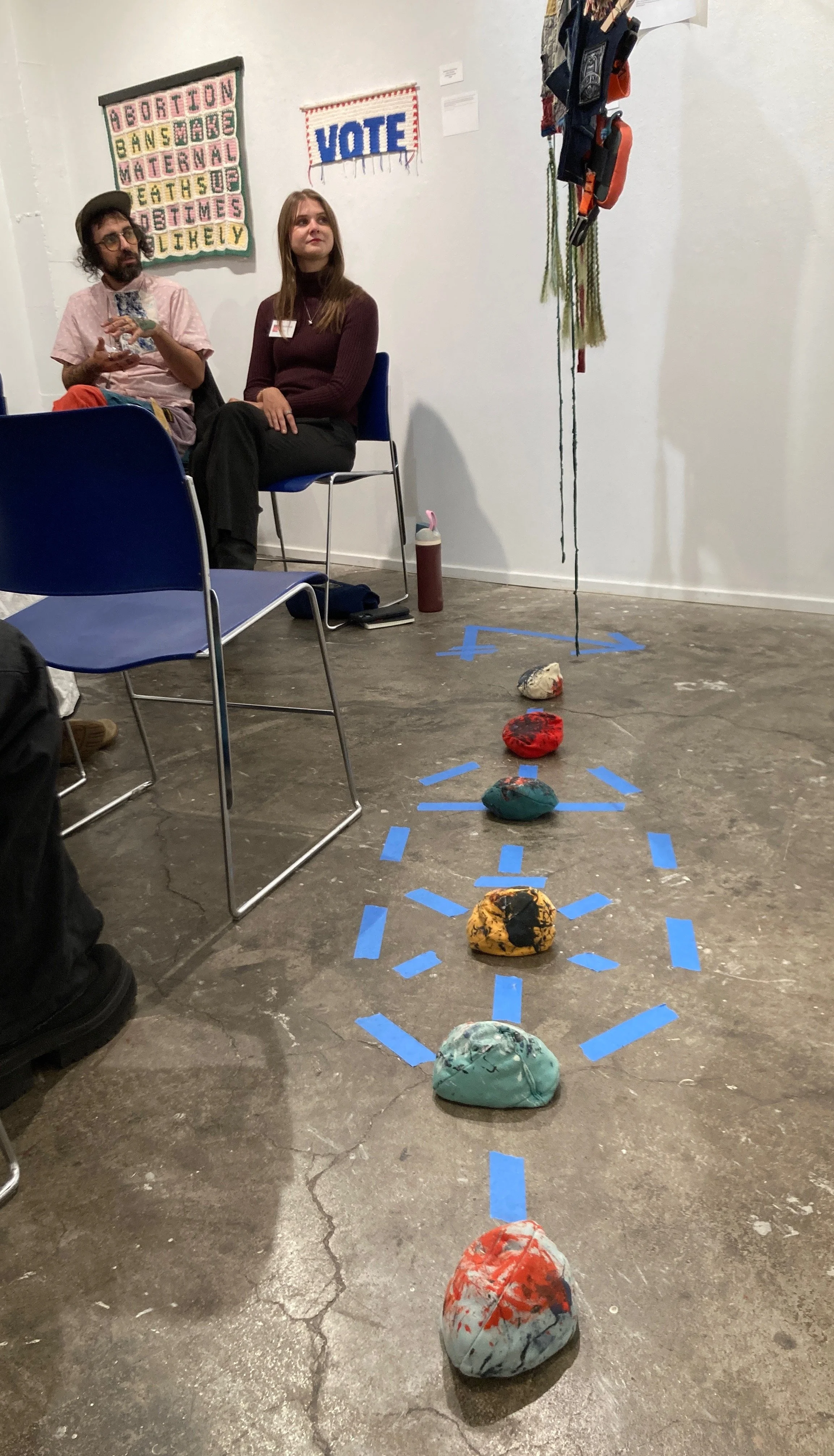

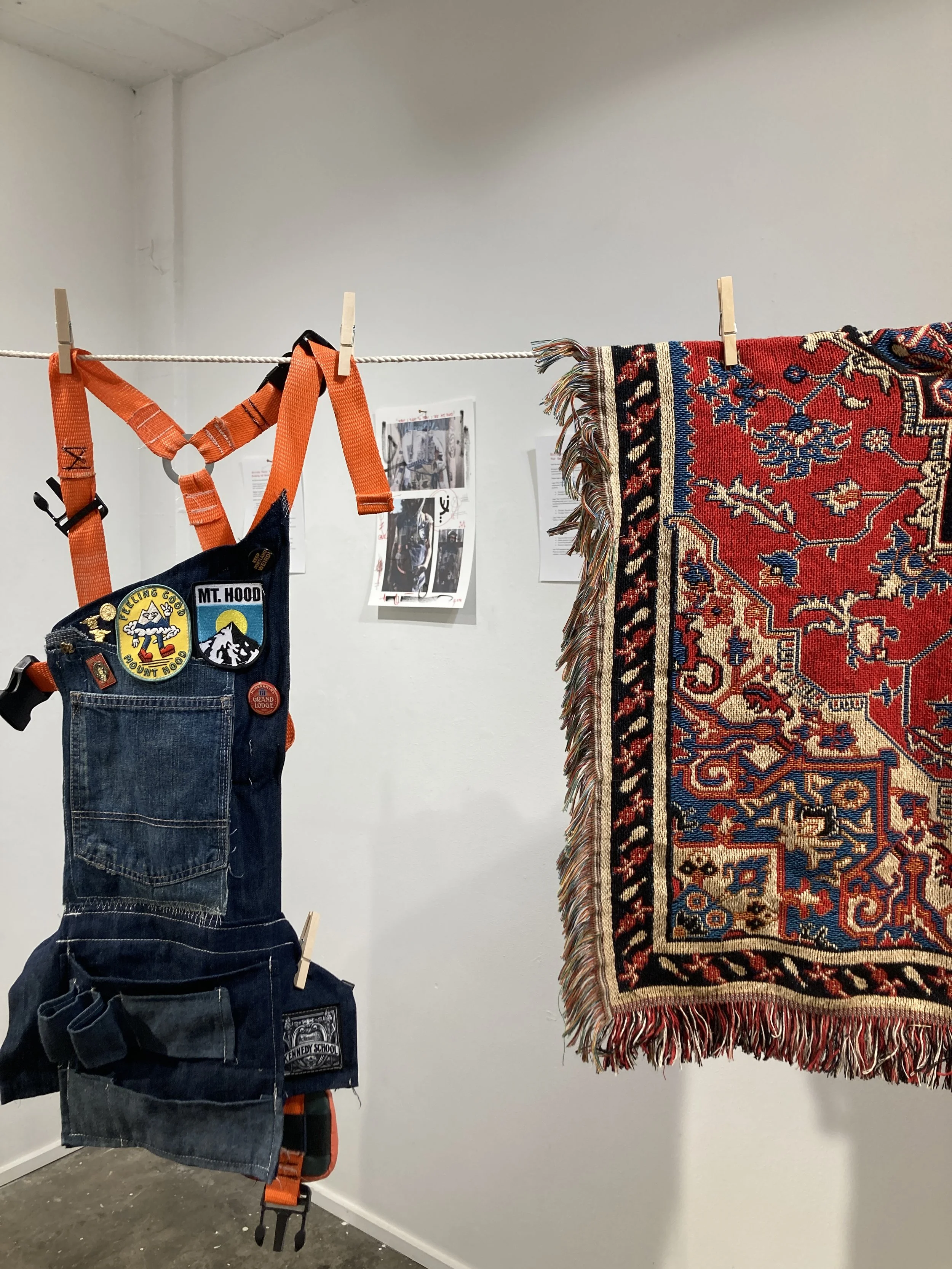

The Kaskadover Project:
Sacred Synthesis in the Shadow of Mount Hood
What happens when ancient wisdom meets contemporary reality?
The Kaskadover Project explores the conscious creation of new Jewish cultural expressions rooted in the Pacific Northwest bio-region. "Kaskadover" combines "Cascade" (our mountain range) with the naming convention of traditional Hasidic courts, creating an intellectual framework for authentic cultural innovation within our bio-regional diaspora.
The Central Recognition is: when we turn towards Jerusalem in morning prayer from Portland, we see Mount Hood - a sacred mountain in indigenous traditions. This geographic disruption becomes spiritual opportunity: How do we honor both inherited wisdom and the land we actually inhabit?
Cultural Technologies Being Developed:
Ritual garments adapted to Pacific Northwest lifestyle and ecology
Prayer practices aligned with bio-regional seasonal cycles
Material culture integrating Carpatho Rusyn*, Jewish, and Pacific Northwest wisdom traditions
Community formation around place-based Jewish practice
Essential Theosophic Principle: Sacred breaking (שבירה) - the recognition that containers sometimes must break for greater light to emerge. Not abandoning tradition but fulfilling its deepest intentions through conscious adaptation to place and time.
The Exhibition: Three ritual items representing different aspects of bio-regional Jewish life:
Tallit Gadol - A portable sanctuary for sacred engagement
Gartel - For recognizing practical work as sacred work
Tallit Katan - Embodied Mitzvot, adapted to our region, our needs, our values
Jewish communities worldwide are grappling with how to maintain authentic practice while responding to contemporary challenges. The Kaskadover Project offers methodology for cultural evolution that preserves essence while enabling innovation.
*Why Carpatho Rusyn? Because there is a model there for deep connection to a temperate mountainous region, with answers to the question of how to exist in multiple modes of thought (dvoeverie), and a history of cultural exchange back and forth with the Ashkenazim. These are a people that we already grew alongside.
Shviridic Theory: The Sacred Mathematics of Breaking and Becoming
Why does the most essential growth require breaking what came before?
Shviridic Theory (from שבירה - shvirah, "breaking") provides framework for understanding how authentic cultural evolution happens through conscious transformation rather than unconscious drift or rigid preservation.
Kabbalistic Foundation: Isaac Luria taught that divine light was too powerful for its original containers, causing them to shatter. This breaking wasn't failure but necessary prelude to forms capable of holding greater light.
Applied to Cultural Evolution:
Sacred Breaking - Conscious transformation that preserves essential patterns while adapting surface forms
Container and Contents - Distinguishing between the wisdom being transmitted and the forms carrying it
Generative Destruction - How limitations create potential for new emergence
Three Principles of Sacred Breaking:
Recognition of Overflow - When containers can no longer hold the expanding contents (tradition can't contain lived reality)
Conscious Intervention - Deliberate participation in transformation rather than unconscious drift or reactive preservation
Pattern Preservation - Maintaining essential spiritual mathematics while allowing surface forms to evolve
Cultural Applications:
How languages evolve while maintaining communication capacity
How religious practices adapt to new contexts while preserving spiritual function
How communities integrate influences while maintaining cultural integrity
How individuals grow through life transitions that require releasing old identities
Contemporary Relevance: Many traditional forms - religious, economic, political - are experiencing shviridic moments. Understanding this pattern helps navigate change as creative opportunity rather than just loss.
Applied Theurgy: Consciousness Technology in Material Form
What if spiritual practice could heal not just individuals but entire ecosystems?
Applied Theurgy explores how traditional Jewish spiritual technologies - ritual objects, practices, and community structures - can serve bio regional healing and cultural synthesis when consciously adapted.
Theurgy (divine work): The practice of consciousness technologies that create beneficial effects in both spiritual and material dimensions.
Core Recognition: Jewish ritual objects and practices evolved as sophisticated consciousness technologies - tools for reliably generating specific spiritual states and community effects. These can serve broader healing when their essential functions are understood and respectfully adapted.
Examples of Applied Theurgy:
Ritual Garments as Consciousness Interfaces:
Tallit creating sacred space that includes landscape rather than separating from it
Daily wear items maintaining ritual consciousness during practical work
Community Practices as Ecosystem Healing:
Festival celebrations aligned with bio regional seasonal transitions
Study practices integrating Torah wisdom with ecological knowledge
Economic Structures as Mutual Aid:
Shmita cycles adapted to bio regional restoration rhythms
Community currencies based on ecosystem capacity rather than extraction
Sacred Geometry as Pattern Medicine:
Functional design creating spaces for both human and more-than-human community
Craft as meditation connecting to place
The Ultimate Vision: Jewish communities as healing agents in bio regional ecosystems - maintaining distinctive practice while contributing to the flourishing of all life.
"Our practices become not walls to guard us but tools to heal a breaking world."
Jewish Mutualism: From Preservation to Pollination
What if Jewish distinctiveness serves relationship rather than separation?
Jewish Mutualism emerges from recognizing that we are entering a new paradigm of Jewish existence - neither exile nor return, but conscious diaspora as ecological and spiritual commitment.
Four Paradigms of Jewish History:
Temple Judaism - Centralized worship (until 70 CE)
Rabbinic Judaism - Preservation in exile (70 CE - 1770’s)
Post Haskalic Judaism - The possibility of Jews as distinct from Judaism (1770’s - present)
Mutualistic Judaism - Flourishing through planting where we are (emerging)
Rabbinic Judaism, even post Haskalah, presupposes and centralizes the concept of exile as a core feature of Judaism. With “returning home” as an option in this contemporary age, what does it mean to choose diasporic life?
From Seed Preservation to Ecosystem Pollination: Like mycorrhizal networks in forests, Jewish Mutualism maintains distinctiveness while creating mutually beneficial relationships with other wisdom traditions and bioregional communities. Our survival serves a purpose beyond ourselves.
The End of Exile Consciousness: Post-1948, diaspora becomes choice rather than exile
Ecological Metaphor: From greenhouse (controlled preservation) to meadow (resilient relationship)
Sacred Purpose: Jewish practices as spiritual technologies that can heal broader human and ecological communities
Practical Applications:
Ritual practices that honor both Jewish tradition and indigenous place-wisdom
Community formation around shared ecological and spiritual values
Economic relationships based on mutual aid rather than extraction
Cultural transmission through embodied practice rather than just textual study
Theological Foundation: The Talmudic story of Rabbi Joshua declaring "Lo bashamayim hi" (It is not in heaven!) - even God celebrates when human communities claim interpretive responsibility for bringing Torah to life in each generation.
The Ultimate Vision: Judaism as "mutualistic actors” in cultural systems - distinctive practices that support the health of entire communities while maintaining essential Jewish identity and wisdom.
Bio-regional Responsa: A Three-Layer Method for Sacred Translation
How do we translate ancient wisdom into contemporary place-based practice?
Bio-regional Responsa adapts traditional Jewish legal methodology to address questions emerging from conscious place-relationship, not abandoning halakha, but extending its reach into bio-regional consciousness.
Three-Layer Interpretive Method:
Layer One: Fulfillment Through Place How does this specific bio-region call us toward more complete observance? Not seeking minimum requirements but discovering how place itself teaches enhanced practice.
Example: Pacific Northwest rain cycles deepening understanding of mikvah and ritual purification
Principle: Bio-region as teacher, not just backdrop
Layer Two: Canonical Grounding
Everything must root in reasonable interpretation grown from traditional Jewish sources. Using established hermeneutical principles to discover how existing frameworks can embrace bio-regional wisdom.
Example: Talmudic agricultural laws applied to forest stewardship and salmon habitat restoration
Principle: Torah's own language becomes ally in translation
Layer Three: Sacred Breaking (שבירה) When necessary for divine spark - acknowledging that sometimes fidelity to Torah's deepest intention requires transforming surface forms.
Example: Prayer direction adapting to acknowledge indigenous sacred geography while maintaining Jerusalem orientation
Principle: Surface transformation serving deeper continuity
Practical Applications:
Seasonal observances aligned with bio-regional cycles rather than calendar abstractions
Dietary practices considering watershed health and local food systems
Community formation including more-than-human beings as stakeholders
Economic relationships based on ecosystem capacity rather than infinite growth
How This Framework Maintains Jewish Integrity: Roots all innovation in traditional interpretive methods / Preserves essential spiritual functions while adapting forms / Requires community dialogue and validation / Acknowledges limits and uncertainties rather than claiming certainty
